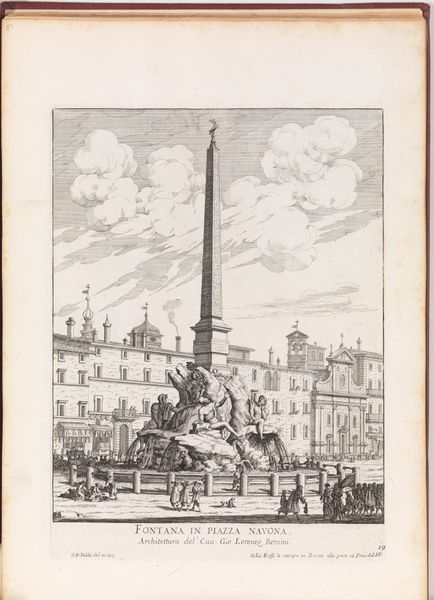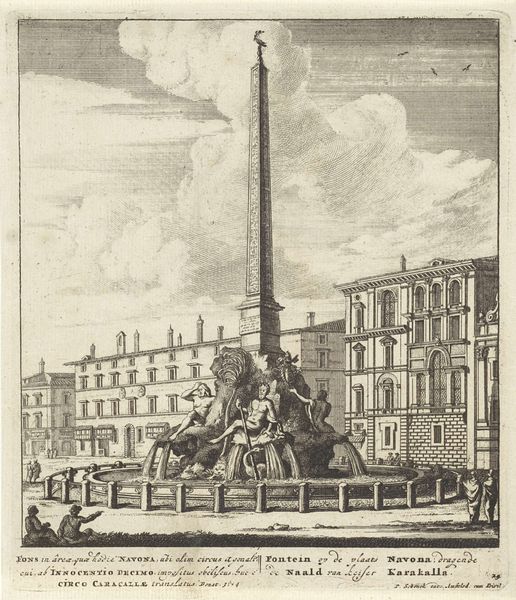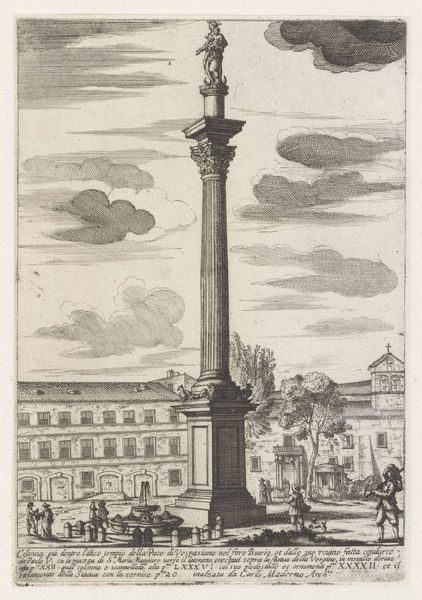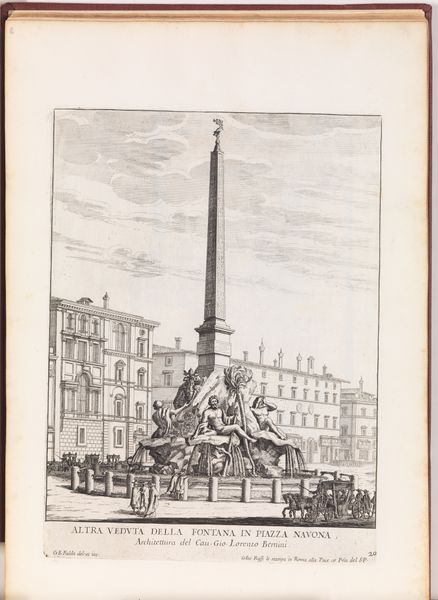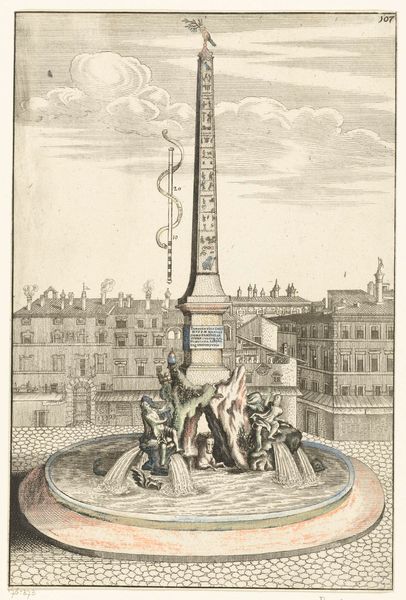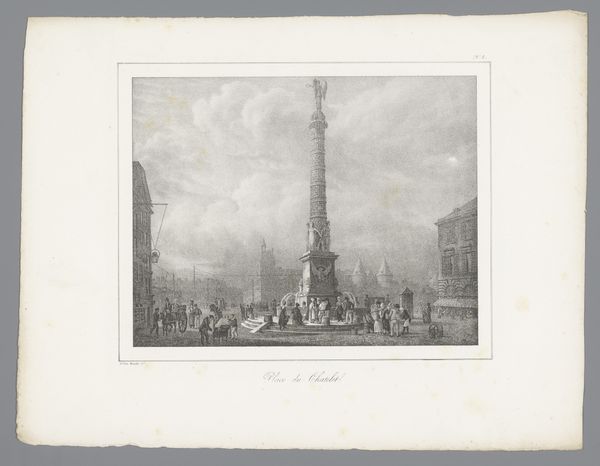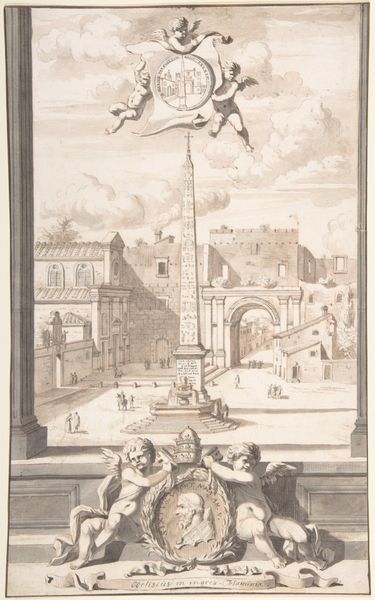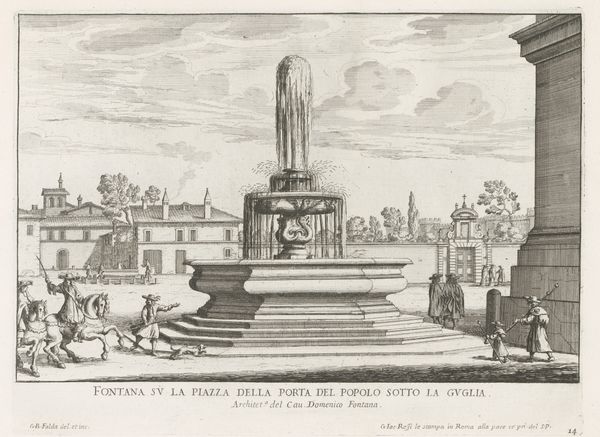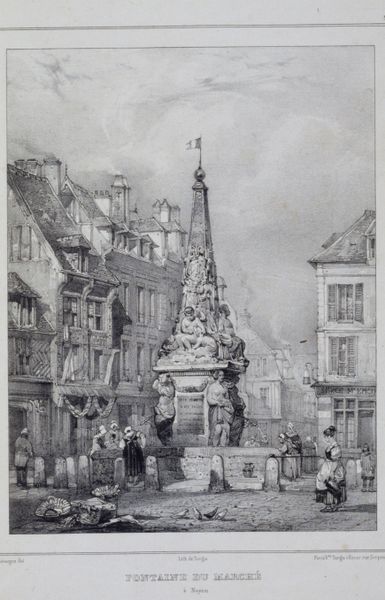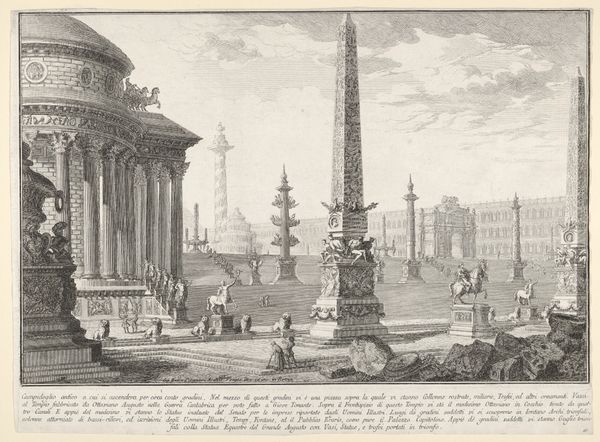
engraving, architecture
#
baroque
#
old engraving style
#
landscape
#
cityscape
#
engraving
#
architecture
Dimensions: height 400 mm, width 264 mm
Copyright: Rijks Museum: Open Domain
Editor: Here we have Bonaventura van Overbeek's 1708 engraving, "Agonalis obelisk met de Fontana dei quattro fiumi". It's quite detailed. I’m immediately drawn to the contrast between the intricate fountain and the stark obelisk towering above it. What do you see as the defining formal aspects of this piece? Curator: I would suggest that the composition’s strength resides in the dynamic interplay between vertical and horizontal lines. Note the rigid verticality of the obelisk against the baroque fountain's complex, swirling forms. How does this contrast create a sense of visual tension? Editor: I see what you mean. The straight lines of the obelisk really emphasize the fountain's busyness. Does the hatching technique enhance the engraving? Curator: Indeed. Van Overbeek masterfully employs hatching to modulate light and shadow. Examine how the density of lines describes volume and texture. Consider the interplay between areas of high contrast and those with subtle gradations. Where does this hatching particularly succeed, and where does it perhaps fall short? Editor: I think the hatching works well to describe the texture of the stone in the fountain, giving it a sense of depth. Maybe it's a bit less successful in rendering the clouds; they seem a little flat. This work reminds me that art is about the decisions that an artist makes in putting together the piece. Curator: Precisely. A fruitful endeavor! And it demonstrates that understanding the formal elements can greatly enrich our understanding.
Comments
No comments
Be the first to comment and join the conversation on the ultimate creative platform.
